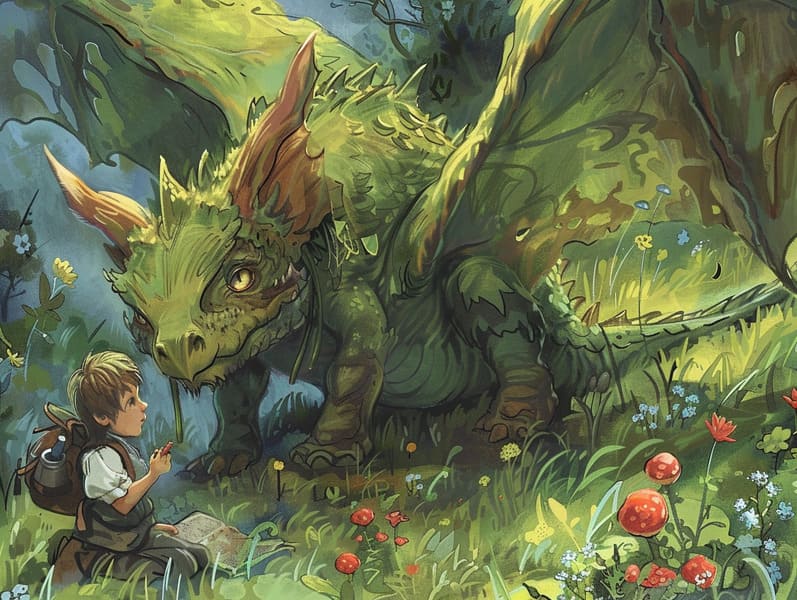Exploring the Roots of Fairy Tales for Kids with Its Steadfast Grace.
Exploring the Roots of Fairy Tales for Kids with Its Steadfast Grace.
Blog Article

Traditional fairy tales have deep roots. These stories have been narrated from one generation to the next far before they were ever written down. They emerged from a variety of backgrounds, including Asian traditions. They were initially disseminated among mature audiences, often carrying themes and messages relevant to the societal norms and beliefs of the time.
Jacob and Wilhelm Grimm, the two Grimm brothers, were among the first to gather many of these beloved tales. Their collection, "Grimm's Folk Tales," included narratives like "The True Bride," "The Bread Crumb Trail," and "Schneewittchen," which have since become mainstays in the world of beloved fairy tales. Similarly, the Danish author's delightful tales, such as "The Mermaid," and "The Ugly Duckling," have stolen hearts worldwide, establishing their place in the pantheon of beloved fairy tales.
Though they are centuries old, traditional fairy tales remain as applicable as ever, especially as children's night stories. These delightful tales are now available in multiple formats, including vibrantly illustrated books, enchanting animations, and online fairy tales.
Their lasting appeal can be ascribed to several captivating elements:
Life Lessons: Timeless fairy tales often whisper important moral lessons. Narratives like "The Boy Who Cried Wolf" teach the merit of being truthful, while "The Race of the Tortoise and the Hare" show the qualities of persistence and humility. These stories offer young readers clear distinctions between good and bad, guiding their moral compass in a mild yet meaningful way.
Compassion and Insight: Ancient fairy tales frequently depict personalities facing trials and tribulations, encouraging listeners to comprehend with their struggles and root for their triumphs. For instance, "The Tale of Beauty and the Beast" points out the value of looking beyond appearances to see the real person of a being, enhancing insight and knowledge.
Cultural Comprehension: Many traditional fairy tales are steeped in the cultural contexts from which they came. Reading these stories can provide delightful insights into different societies, strengthening a sense of global respect and understanding.
Fantasy and Imagination: The fantasy-filled elements in old fairy tales—wizardry and magic—unleash children’s imaginations. These narratives bring readers to extraordinary realms, stimulating inventive dreams and a sense of delight that persists a lifetime.
Classic fairy tales are not only spellbinding but also teaching. They work as magical tools in cultivating various mind and heart abilities in young ones. When traditional fairy tales are spoken, they advance verbal development by offering new terms and meanings and intricate sentence structures. This practice also boosts listening skills and attention, as young readers hang on every word, expectant to see what happens next.
Furthermore, exploring the themes and characters of ancient fairy tales can improve reasoning skills and reasoning skills. Little ones learn to spot patterns, guess what will happen, and comprehend cause and effect. These deliberations also support children express their thoughts and feelings, nurturing their emotional intelligence.
In today’s technological era, the availability of check it out online storybooks has made these stories more available than ever. Online resources and software give vast collections of children's fairy tales that can be browsed or listened via anytime, anywhere. Fairy tales narrated are particularly liked, supplying an captivating way for kids to savor these alluring stories. Audio stories and read-out-loud stories bring characters and settings to life, often accompanied by bewitching musical scores and songs that intensify the tale journey.
The timeless appeal of timeless fairy tales lies in their ability to shift to today's world while maintaining their fundamental ideas. Contemporary modernizations of these stories often introduce more varied characters and modern settings, making them meaningful to today’s audience. However, the underlying themes of boldness, humanity, and righteousness remain unchanged, continuing to resonate with audiences of all ages.
Timeless fairy tales also offer a sense of contentment and homeliness. They make accessible a neat narrative with a distinct beginning, middle, and end, often concluding with the resolution of conflicts and the triumph of right over wrong. This reliability can be comforting for children, yielding a sense of sturdiness in an variable world.
Timeless fairy tales continue to mesmerize and edify new generations, maintaining their captivation and pertinence in modern society. As bedtime stories for kids, they make available a perfect blend of charm and understanding, enhancing moral values, empathy, and creativity. The proliferation of online fairy tales and the well-received status of fairy tales voiced affirm that these classic fairy tales remain accessible to new generations.
By guarding and broadcasting these fairy tales, we continue to esteem the rich tapestry of cultural heritage and cultural heritage. Whether you are seeing a beautifully illustrated book, accessing a digital collection, or listening via an read-aloud story, the majesty of timeless fairy tales is always within reach. These tales highlight of the eternal essence of fairy tales and its ability to unite us across epochs and places.
No matter if you are seeing a richly illustrated book, perusing a virtual collection, or listening on an audiobook, the radiance of classic fairy tales is always within reach.
These stories convey of the immortal effect of tales and its ability to tie us across time and space, forming a connection that fascinates and enlightens alike.